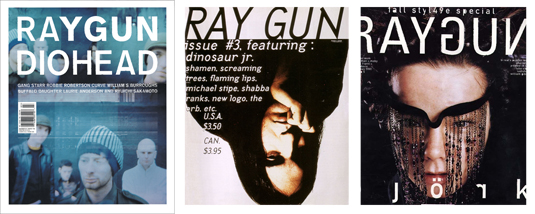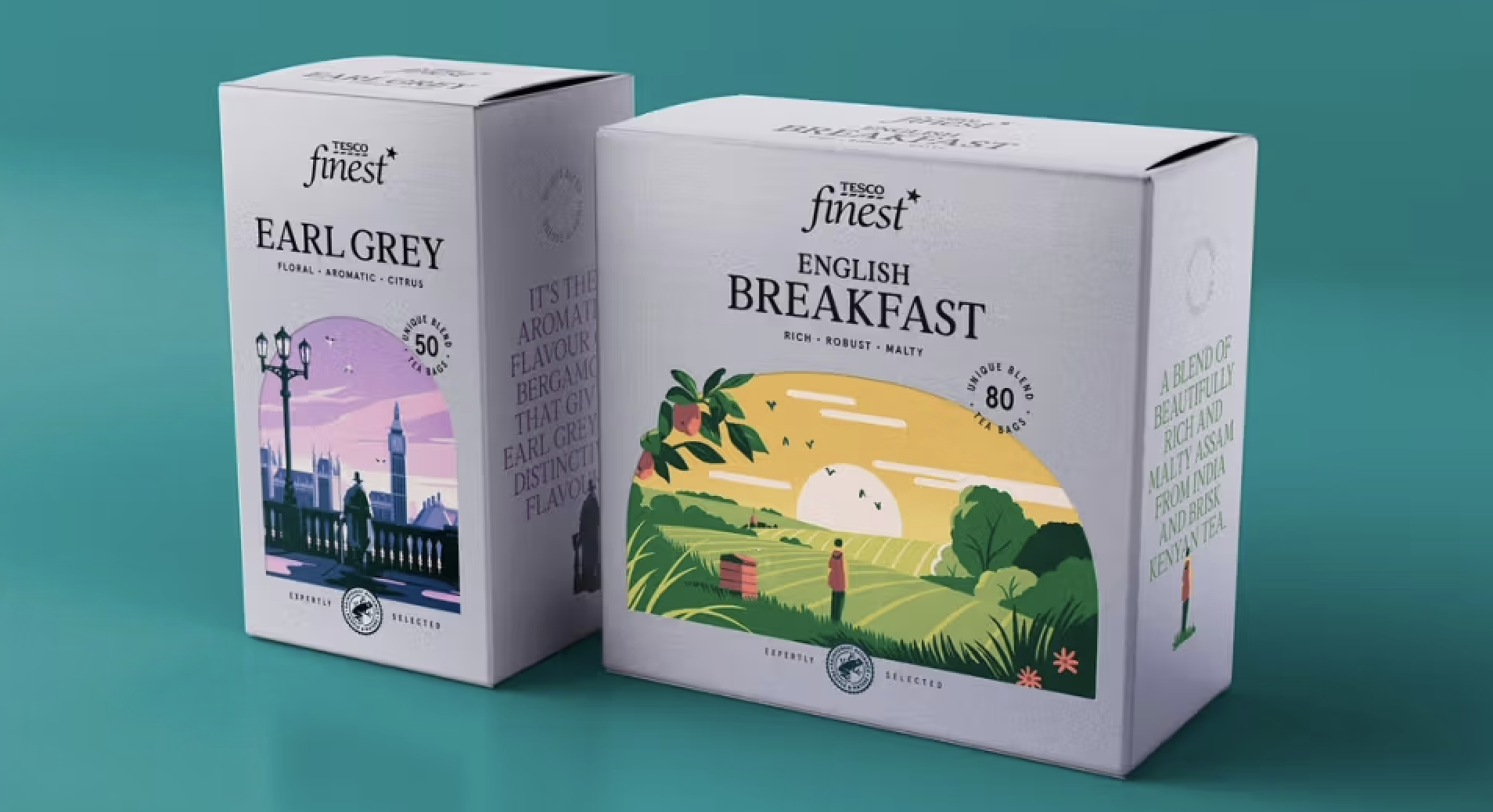20 key moments in modern design history
We select 20 milestones that have helped shape the modern world of design from the Sixties to the present decade.
Whether it's been the launch of an iconic, era-defining studio, the release of a game-changing piece of software, or a seminal project that sent ripples through the industry, certain moments in the history of modern graphic design have truly helped drive the discipline forward.
Here, we've rounded up 20 of the most significant ones, from the Sixties to the present decade. Of course, we're bound to have missed some, so please leave your suggestions in the comments!
1962: the birth of D&AD

When a group of thought-leading designers and art directors in early '60s London joined forces to share their passion for creative communication, they could never have imagined what a landmark moment it was. David Bailey, Terence Donovan, Alan Fletcher and Colin Forbes teamed up in 1962 to create D&AD (Design and Art Direction), an organisation dedicated to promoting excellence in design and advertising. The following year, the first D&AD Awards saw 2,500 entries, and 17 Pencils: one Black and 16 Yellow. The awards would go on to become the global benchmark for achievement.
1972: Pentagram founded

A decade after co-founding D&AD, Alan Fletcher and Colin Forbes joined forces once again, this time with Theo Crosby, Kenneth Grange and Mervyn Kurlansky – to start what would become the world's most prominent design studio: Pentagram.
Now with 19 partners spread across London, New York, San Francisco, Austin and Berlin, the multi-award-winning agency spans graphic design, identity, architecture, interior and product design.
1973: Dark Side of the Moon

The recent death of Storm Thorgersen brought much of his iconic work back to the fore as his legacy was discussed: amongst his genre-defining work for such diverse groups as Led Zeppelin, Black Sabbath, Genesis and Muse, one of his most seminal pieces, of course, was the prism that adorns Pink Floyd's Dark Side of the Moon, heralded by many as one of the greatest album covers of all time.
1978: Saville joins Factory

Having studied graphic design at Manchester Polytechnic, the young designer Peter Saville famously met Factory Records founder Tony Wilson in 1978, leading to a commission for FAC 1, the label's first poster. Saville would become a partner at Factory, and go on to create iconic artwork for the likes of Joy Division and New Order that would inspire a generation.
Daily design news, reviews, how-tos and more, as picked by the editors.
1980: Brody art directs The Face

Neville Brody's legendary stint at The Face between 1981 and 1986 had a similar impact on magazine design as Saville on the music industry a couple of years earlier. Like Saville, Brody started his career in music but soon carved a niche for his boundary-breaking approach to typography and page layout. He would go on to launch Research Studios in 1994.
1986: tDR opens its doors

Proudly based in Yorkshire in defiance of the UK's London-centric design industry, The Designer's Republic (tDR) built a reputation for blending a fiercely anti-establishment attitude with design work for global behemoths such as Coca-Cola.
Its doors closed in 2009, although founder Ian Anderson continues to keep the name alive - with alumni such as Matt Pyke, Michael C Place and Sanderson Bob building reputations in their own right. And a documentary movie is also on the way.
1992: Carson powers up Raygun

Surfer-designer David Carson was to the '90s as Brody was to the '80s, and his weapon of choice was the alternative rock magazine Raygun. Run out of Santa Monica, California, the magazine championed then emerging artists such as Radiohead, Björk and Flaming Lips and became a proving ground for Carson's chaotic, illegible, much mimicked approach to typographical design.
1993: Sagmeister goes it alone

After a stint at Leo Burnett in Hong Kong, Austrian designer Stefan Sagmeister returned to New York in 1993 for a short spell at Tibor Kalman's agency M&Co. When Kalman departed to launch 'Colors' magazine, Sagmeister took the plunge and started up his own studio. His now infamous penis-based calling card was echoed in 2012 when Jessica Walsh was elevated to partner at the agency, revealing all.
1998: iMac banishes beige

After a somewhat glum period in the early '90s - almost unthinkable today, given its utter global dominance - Apple sent ripples through both the design and computing sectors with the launch of its translucent all-in-one iMacs in a rainbow of hues. Eight iterations on, the iMac is, of course, still a familiar staple of any self-respecting design agency.
1999: Guinness is worth the wait
The iconic Irish stout is renowned for its highly creative, conceptual approach to its advertising - but it's never quite topped this. Heading up countless 'best ever advert' polls and scooping awards at the Clios, D&AD and Cannes, the 'Surfer' campaign is a 60-second black-and-white masterpiece following a Polynesian surfer prepared to wait for the perfect wave.
1999: MyFonts levels the field

Launching in September 1999, Bitstream's groundbreaking online type marketplace began selling digital fonts in March the following year. MyFonts pioneered the long-tail approach, selling type created by everyone from global foundries to enterprising individuals, all in one place. Monotype acquired it in 2012 for a cool $50 million.
2000: FontLab dominates type design

MyFonts was just the beginning: the new millennium marked a real turning point for typography. FontLab Ltd's flagship font editor, FontLab Studio, gained traction as the dominant package - due in no small part to Macromedia acquiring Altsys, the company behind erstwhile leader Fontographer, and ceasing its development. FontLab later acquired the rights to Fontographer in 2005.
2001: OFFF Festival founded

Now one of the most well-established events on the creative calendar, OFFF started life in Barcelona in 2001 as the Online Flash Film Festival. It has since been held at least once a year, bringing together some of the world's most inspiring creatives for a long weekend discussing the latest trends and inspiring work.
2002: InDesign quashes Quark

Adobe's shrewd decision in 2002 to make its fast-growing desktop publishing package InDesign Mac-native bound its fortunes to designers' darling Apple. A few short years after Quark - creators of the then-industry-standard DTP software - had offered to buy out Adobe, the two companies were going head to head on its home turf.
The advent of Creative Suite the following year bundled InDesign with the already ubiquitous Photoshop and put another nail in the coffin for Quark, from a designer's perspective at least.
2005: Adobe swallows Macromedia

Not long after Creative Suite 2 rolled out came another game-changing acquisition for the design industry, when Macromedia - creators of Flash, Dreamweaver, FreeHand and more - became part of the Adobe family for a $3.4billion price tag, consolidating many of the major creative applications in the process. Bar FreeHand, most are still going strong in 2013 - but it's all about the Cloud now.
2006: Sony's BRAVIA balls
Like Surfer, this is one of those adverts that sticks with you. With an unmistakable José González soundtrack and featuring an ensemble cast of 250,000 multi-coloured rubber balls bouncing down a San Francisco street, the campaign kick-started Sony's colour.like.no.other tagline and a run of related ads that never quite attained the same iconic status.
2007: London 2012 logo

Love it or hate it (and according to its public reception at the time, it was predominantly the latter), Wolff Olins' Olympics branding sparked a global debate on a mammoth scale, with almost as many scornful parodies as there were disparaging comments. Any piece of work that brings design so dramatically into public consciousness should take its place as a milestone in design history.
2008: Shepard Fairey's HOPE

One of the most iconic illustrations of recent decades, Shepard Fairey's stylised HOPE design quickly gained traction as a powerful visual shorthand for Barack Obama's presidential campaign. Created in a day, the red, beige and blue portrait was initially sold as a limited-run poster, but took off digitally as a viral phenomenon.
2009: OFFSET joins OFFF

Despite its remarkably similar name, OFFSET, Dublin's fast-expanding creative festival has nothing to do with its more established Spanish counterpart. It started life as an initiative of The Small Print in 2009, and in four short years has gone on to become one of the industry's must-attend events. Some 24 of the world's most inspiring speakers captivate audiences over three days.
2010: iPad changes the game

Yes, unbelievably it really was just three years ago that Cupertino announced its tablet to rule them all. The iPad has gone on to revolutionise digital publishing and all manner of portable content consumption - bringing a viable digital revenue stream to individuals and global conglomerates alike. The Mini joined it in late 2012.
Words: Nick Carson
Liked this? Read these!
- Download the best free fonts
- Adobe Photoshop CS6 hands-on review
- The ultimate guide to designing the best logos
What design milestones have we missed? Let us know in the comments below!

The Creative Bloq team is made up of a group of art and design enthusiasts, and has changed and evolved since Creative Bloq began back in 2012. The current website team consists of eight full-time members of staff: Editor Georgia Coggan, Deputy Editor Rosie Hilder, Ecommerce Editor Beren Neale, Senior News Editor Daniel Piper, Editor, Digital Art and 3D Ian Dean, Tech Reviews Editor Erlingur Einarsson, Ecommerce Writer Beth Nicholls and Staff Writer Natalie Fear, as well as a roster of freelancers from around the world. The ImagineFX magazine team also pitch in, ensuring that content from leading digital art publication ImagineFX is represented on Creative Bloq.
